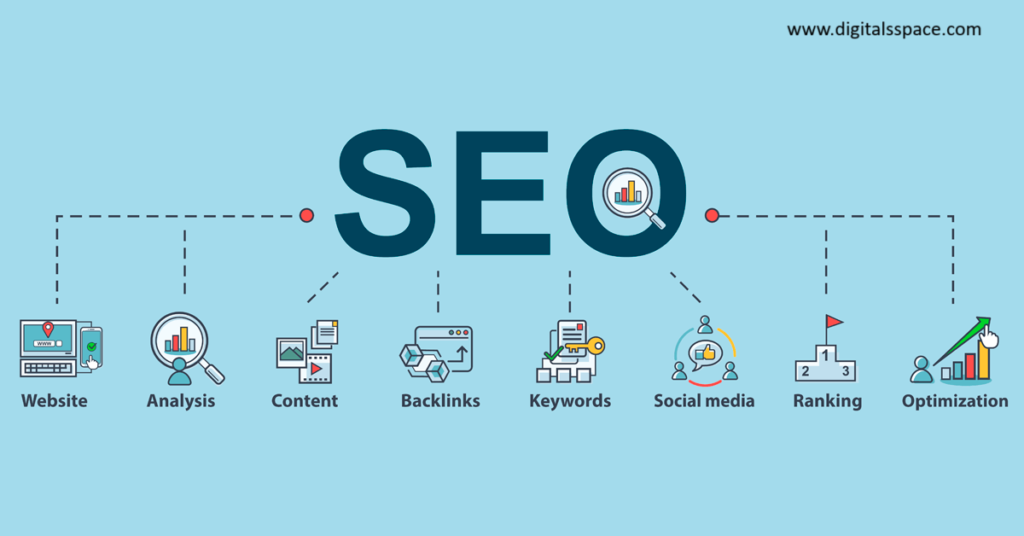How to Optimize Your Website for Search Engines
In the modern digital era, optimizing your website for search engines is a critical necessity rather than a choice. Search Engine Optimization (SEO) plays a pivotal role in enhancing your website’s position in search results, attracting organic traffic, and increasing online visibility. This comprehensive guide outlines effective strategies to optimize your website for search engines and achieve better performance.

1. Conduct Keyword Research For better Search Engines Optimization
Keyword research is the cornerstone of SEO. It involves identifying the terms and phrases that your target audience uses to search for your products or services.
- Use tools like Google Keyword Planner, SEMrush, or Ahrefs to find high-traffic, low-competition keywords.
- Focus on long-tail keywords that reflect user intent. For example, instead of targeting “shoes,” aim for “best running shoes for beginners.”
- Group your keywords into clusters based on topics to create a well-structured content strategy.
2. Optimize On-Page Elements
On-page SEO ensures that individual pages are optimized for search engines. This includes:
a. Title Tags and Meta Descriptions
- Create unique, descriptive title tags that include your primary keyword.
- Write meta descriptions that entice users to click while incorporating relevant keywords.
b. Headings and Subheadings
- Use header tags (H1, H2, H3) to organize content.
- Include keywords naturally within headings to improve readability and SEO.
c. URL Structure
- Keep URLs short, descriptive, and keyword-rich.
- Avoid using special characters or long, complex URLs.
d. Image Optimization
- Compress images to improve loading speeds.
- Use descriptive file names and alt tags with relevant keywords.
3. Publish High-Quality Content
Content is king in SEO. Search engines prioritize websites that provide valuable and engaging content.
- Focus on creating in-depth, informative content that answers your audience’s questions.
- Incorporate keywords naturally—avoid keyword stuffing.
- Update content regularly to keep it fresh and relevant.
- Utilize different formats, such as blogs, videos, infographics, and case studies.

4. Improve Website Speed and Performance
Page speed is a critical ranking factor. A slow-loading website can deter visitors and hurt your SEO rankings.
- Use tools like Google PageSpeed Insights to identify performance issues.
- Compress large files, enable browser caching, and use a Content Delivery Network (CDN).
- Optimize your hosting services for faster server response times.
5. Ensure Mobile-Friendliness
With the majority of web traffic coming from mobile devices, having a mobile-friendly website is non-negotiable.
- Use responsive design to ensure your site adapts to all screen sizes.
- Test your site using Google’s Mobile-Friendly Test tool.
- Ensure clickable elements are easy to tap and navigation is user-friendly.
6. Build High-Quality Backlinks
Backlinks from reputable websites signal to search engines that your content is valuable.
- Focus on earning links from authoritative sites in your industry.
- Create shareable content, such as insightful articles, data reports, or infographics.
- Engage in guest blogging to reach new audiences and earn backlinks.
Read this also: How to Get Your Blog Posts to Rank Higher
7. Optimize for Local SEO
If your business serves a specific geographical area, local SEO is vital.
- Claim and optimize your Google My Business profile.
- Include your business name, address, and phone number (NAP) consistently across your site and local directories.
- Encourage customer reviews to boost credibility and local rankings.
8. Leverage Technical SEO
Technical SEO involves optimizing your website’s infrastructure to make it easier for search engines to crawl and index.
- Use an XML sitemap to guide search engines through your site’s structure.
- Implement structured data markup (schema) to help search engines understand your content.
- Ensure your website has an SSL certificate for secure connections (HTTPS).
9. Monitor and Analyze Performance
SEO is an ongoing process that requires regular monitoring.
- Use tools like Google Analytics and Google Search Console to track traffic, rankings, and user behavior.
- Identify and address issues such as high bounce rates or low click-through rates (CTR).
- Continuously refine your strategy based on performance metrics.
10. Stay Updated with SEO Trends
Search engine algorithms evolve frequently, making it crucial to stay informed about the latest updates.
- Follow reputable SEO blogs and forums, such as Moz, Search Engine Journal, and Neil Patel.
- Attend industry webinars and conferences to learn from experts.
Conclusion
Optimizing your website for search engines is a multi-faceted process that involves technical tweaks, content improvements, and user experience enhancements. By following these strategies, you can improve your website’s visibility, attract more organic traffic, and achieve long-term success. Remember, SEO is a continuous journey, and staying committed to best practices is key to staying ahead of the competition.
Embrace these tips and watch your website climb the ranks, bringing your business closer to its digital goals.

